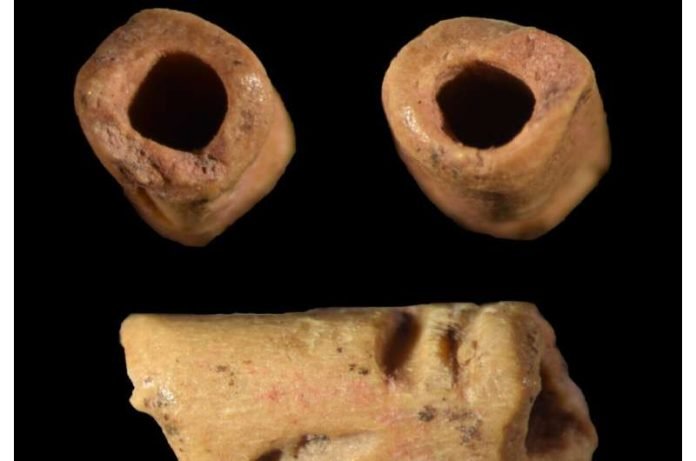
Once upon a time, in what we now call Wyoming, a team led by a curious archaeology professor from the University of Wyoming, Todd Surovell, unearthed a tiny treasure—a bone bead that’s almost 13,000 years old.
This small, tube-shaped bead, discovered at a site known as the La Prele Mammoth, is believed to be the oldest of its kind in the Americas.
This bead’s discovery is not just a simple find; it tells a story that goes back to the days when mammoths roamed the land.
The La Prele Mammoth site, situated in Converse County, was once the scene of a dramatic event: the killing or scavenging of a young Columbian mammoth.
Around this ancient giant, people of the time set up camp, possibly to process the mammoth for food, tools, and more.
To unravel the mystery of the bead’s origins, Surovell and his team, comprising experts from various universities and organizations, used a technique known as ZooMS.
This method analyzes the chemical makeup of ancient bones, helping researchers understand more about the animals and the people who lived thousands of years ago.
Their investigation revealed that the bead was crafted from the bone of a hare, specifically from a part of the leg or foot.
This finding is significant for several reasons. It provides the first solid proof that people during the Clovis period, a crucial era in North American prehistory around 12,000 years ago, used hares not just for food but for making tools or ornaments.
The Clovis culture is well-known for its distinctive stone tools, first identified at a site in New Mexico.
The bead itself is tiny, measuring about 7 millimeters long, with a hole in the center just 1.6 millimeters wide.
The researchers looked into whether this bead could have been an accidental creation, perhaps the result of being swallowed and digested by a carnivore.
However, this theory was quickly dismissed. Carnivores weren’t common at the site, and the bead was found close to other artifacts made by humans.
The marks on the bead also suggested it was made intentionally, possibly using stones or even human teeth. People back then likely wore it as a piece of jewelry or as decoration on their clothes.
Todd Surovell, the man behind this discovery, is not just any archaeologist. He’s a specialist in the Paleoindian period, the dawn of human history in America.
His work, which has taken him from the Great Plains and Rocky Mountains to far-off lands in Eurasia, seeks to understand how ancient people lived, from the decisions they made to how they interacted with their environment.
This bead’s discovery opens a window into the past, offering us a glimpse of the creativity and resourcefulness of the earliest Americans.
It’s a testament to the human spirit, showcasing our ancestors’ ability to find beauty and utility in the world around them, even in something as small as a hare’s bone.
The research findings can be found in Scientific Reports.
Copyright © 2024 Knowridge Science Report. All rights reserved.



